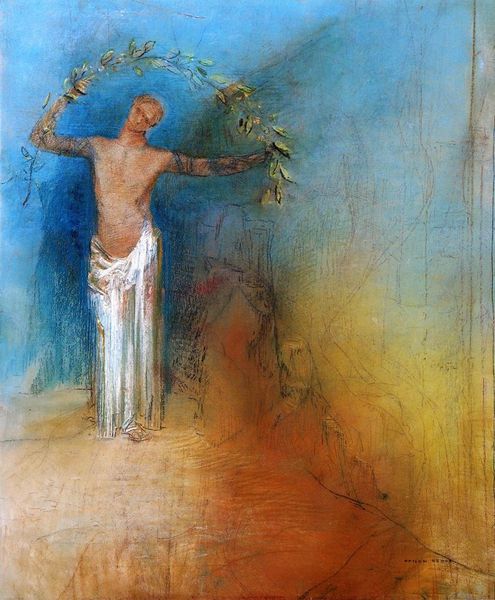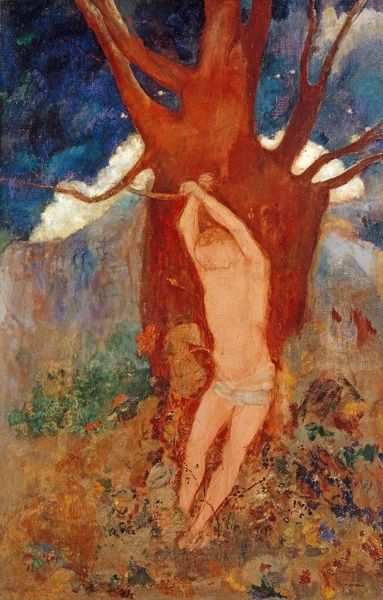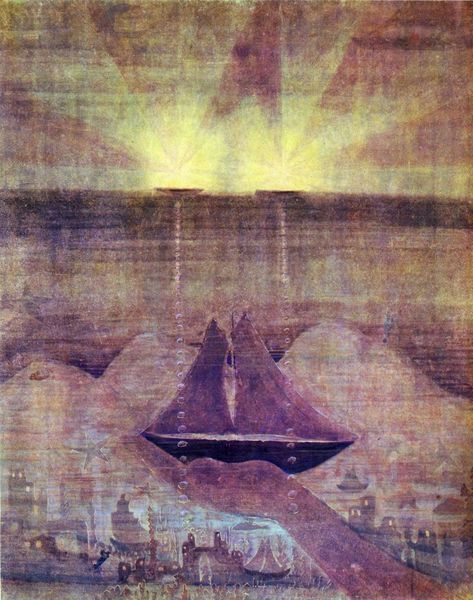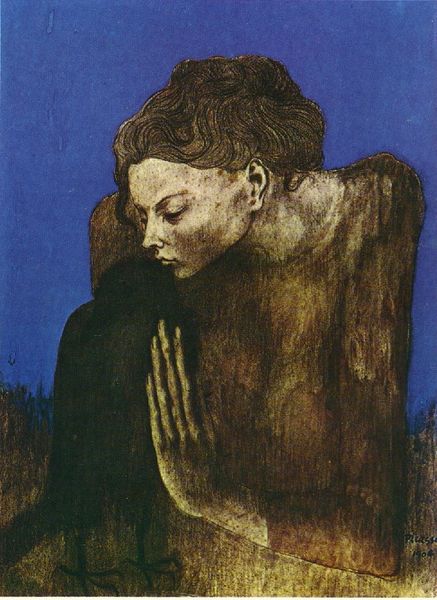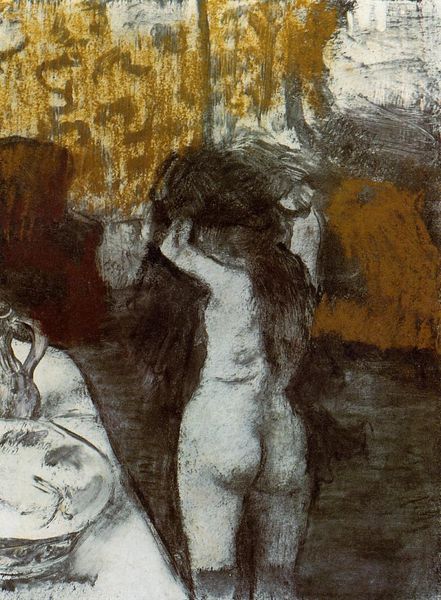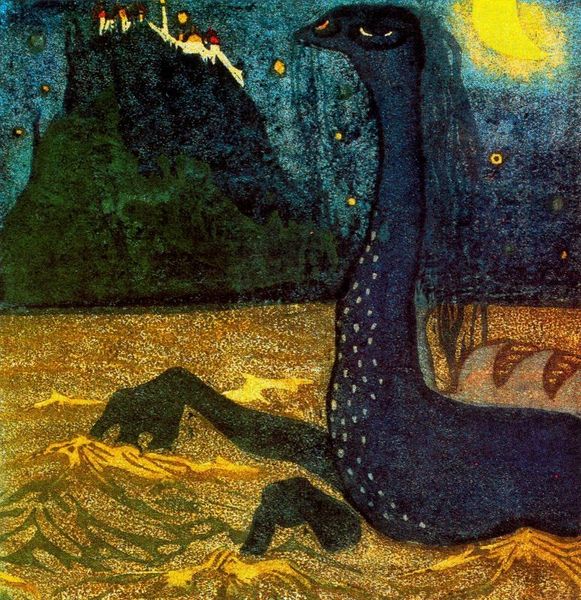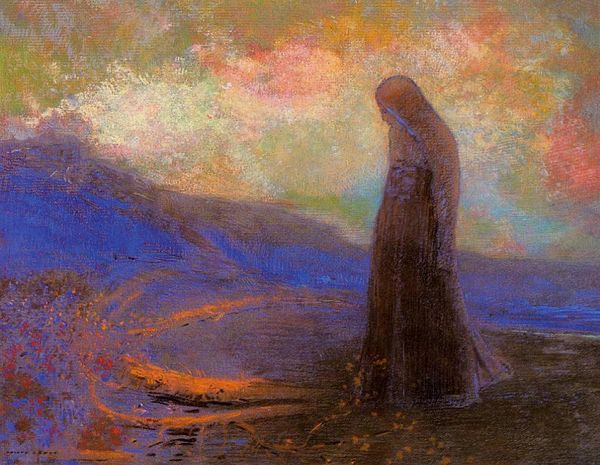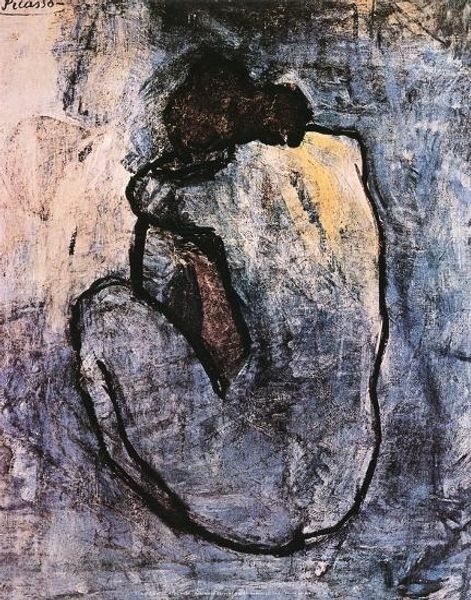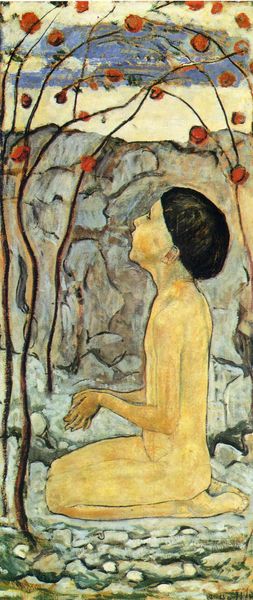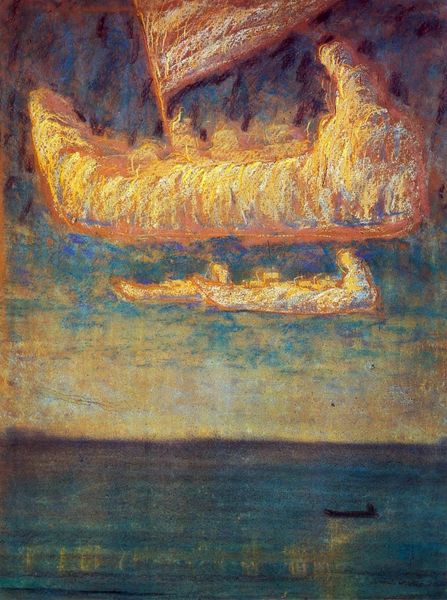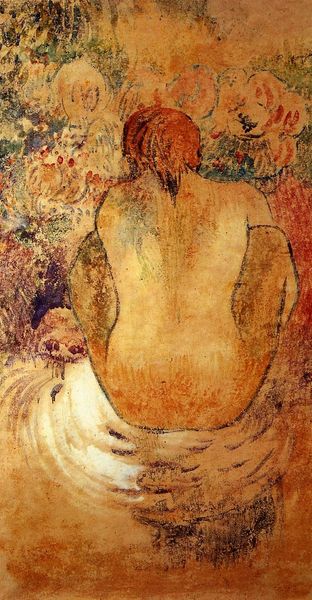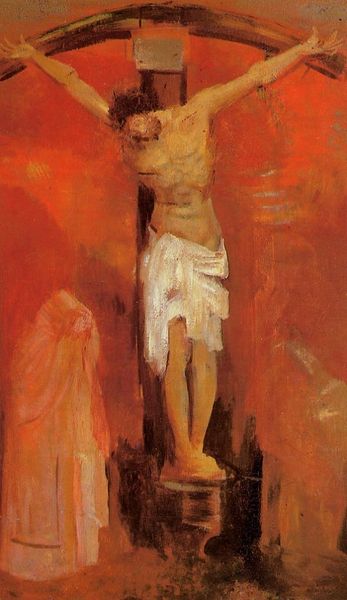
drawing, charcoal, pastel
#
drawing
#
landscape
#
charcoal drawing
#
figuration
#
jesus-christ
#
pastel chalk drawing
#
christianity
#
symbolism
#
crucifixion
#
charcoal
#
pastel
#
history-painting
#
christ
Copyright: Public domain
Editor: So here we have Odilon Redon’s "Christ on the Cross" from 1897, rendered in charcoal and pastel. The muted tones give it such a somber feel, and Christ’s pose feels… different, not quite the usual suffering. How do you interpret this work, considering its historical context? Curator: It's intriguing, isn't it? Redon's Symbolist approach isn't just about religious iconography. Think about the fin-de-siècle context: anxieties around industrialization, the questioning of traditional institutions, a surge in interest in spirituality and the subconscious. Christ's raised arms – is that supplication, or resistance? To what systems of power, both secular and divine, might Redon be subtly gesturing towards? Editor: That's fascinating. I'd assumed a more straightforward religious reading, but I see your point. Could the landscape elements also carry a symbolic weight related to social turmoil or resistance to social norms of the era? Curator: Precisely! The barren landscape, the stark contrast of light and shadow – these amplify the sense of unease and societal upheaval. And consider Redon’s own personal struggles with conformity. How might his individual experiences shape his interpretation of such a loaded image? Is the light a sign of hope, or just another form of oppression bearing down? Editor: I never thought about it that way. I was too focused on the religious symbolism alone, missing the potential critique of broader power structures embedded in it. Curator: It shows how art can reflect not only personal struggles but also societal tensions, and perhaps encourage critical thought about the very systems in which we're all implicated. Editor: I’m walking away from this with such a fresh lens on the work! I will remember that.
Comments
No comments
Be the first to comment and join the conversation on the ultimate creative platform.
